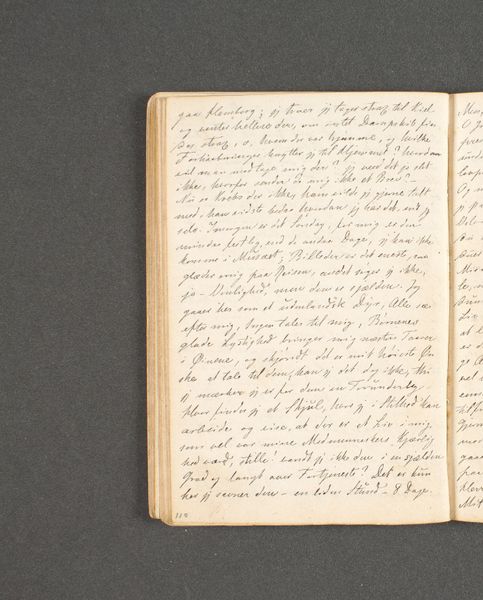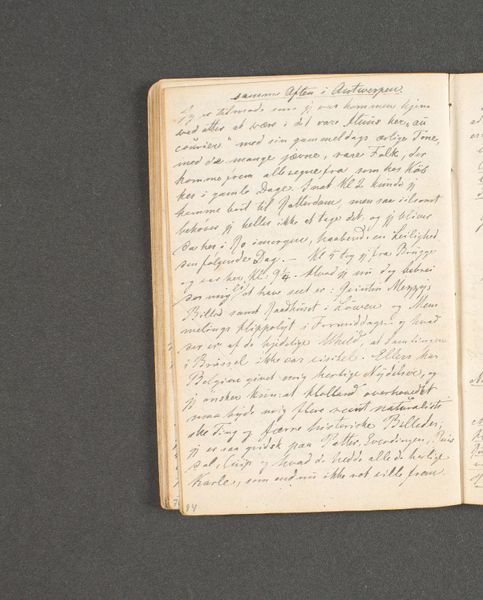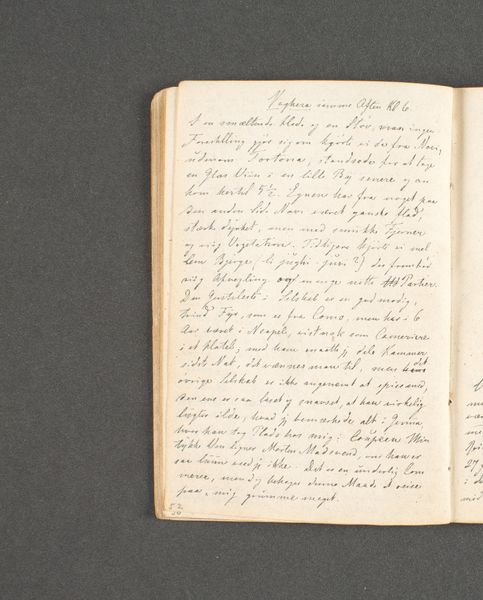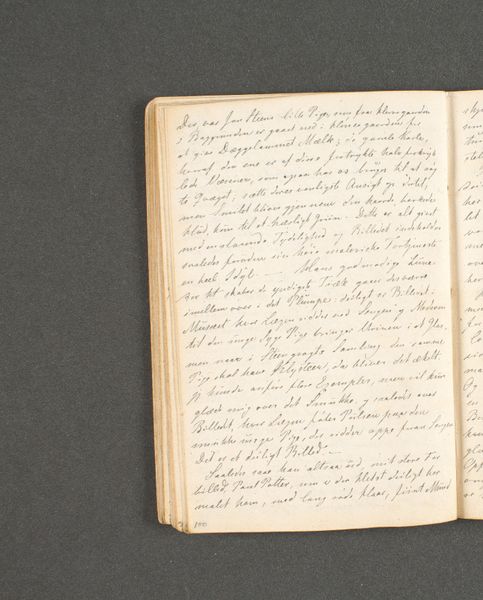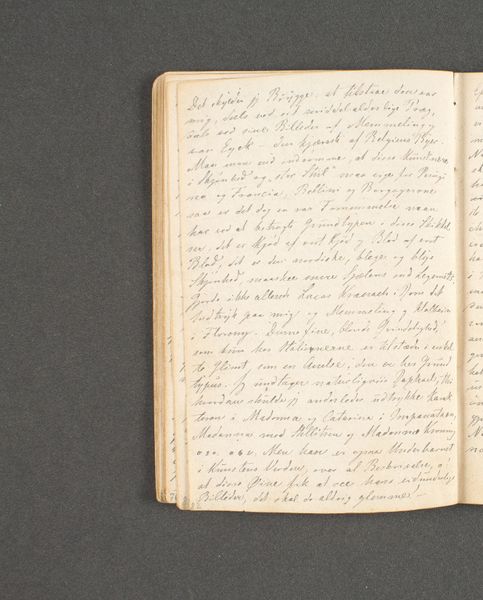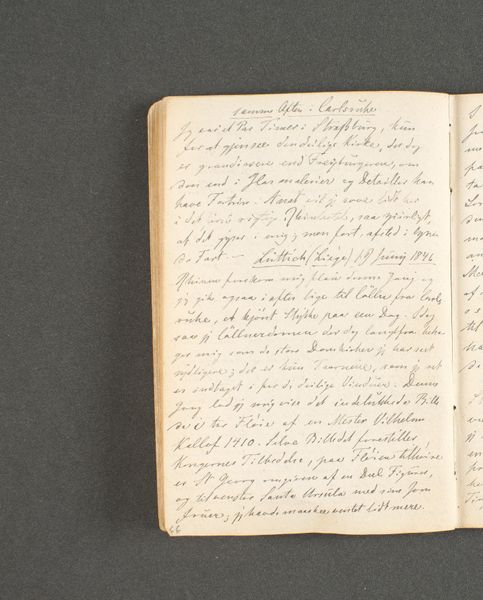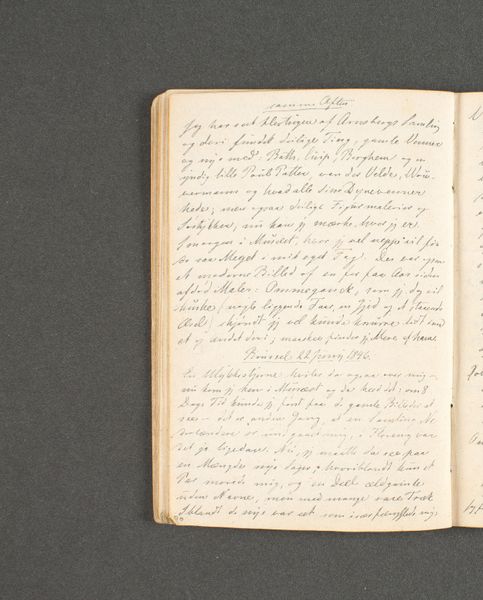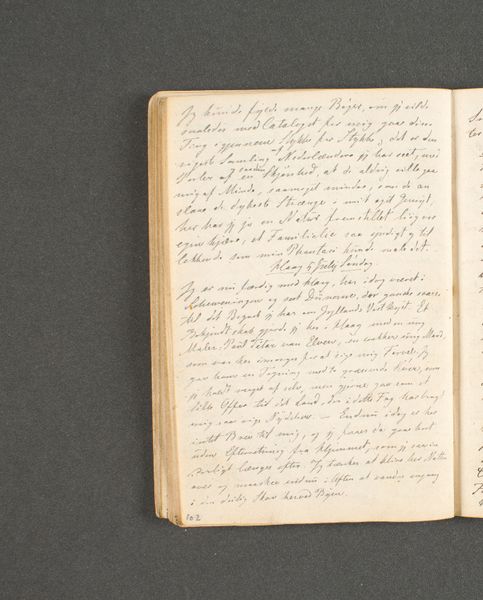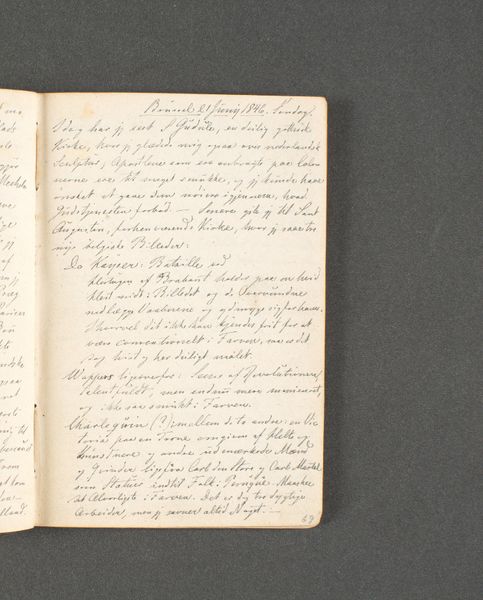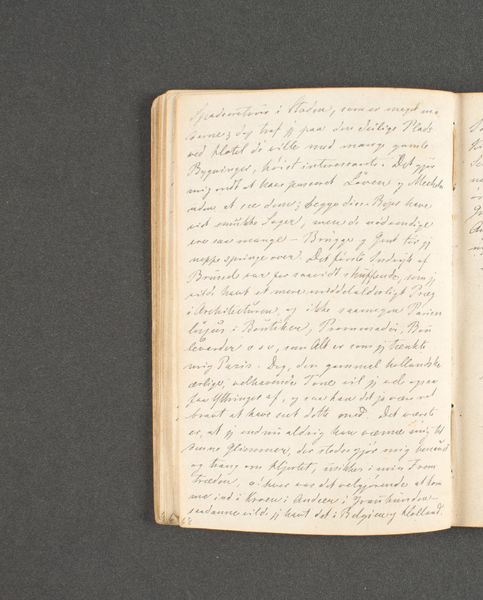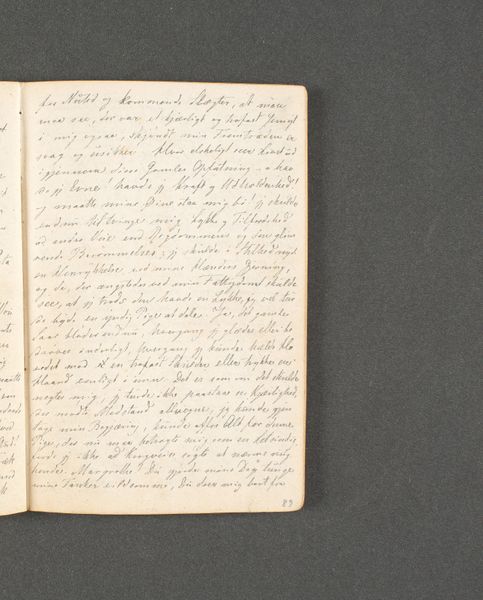
drawing, paper, ink
#
drawing
#
paper
#
ink
#
journal
#
romanticism
#
genre-painting
Dimensions: 131 mm (height) x 89 mm (width) (bladmaal)
Editor: Here we have "Rejsedagbog. Haag," or "Travel Journal. The Hague," created by Johan Thomas Lundbye in 1846. It's a drawing done with ink on paper. The density of the script gives it an interesting texture. What's your take on it? Curator: Immediately, my eye is drawn to the rhythmic pattern of the handwriting, how each stroke contributes to a larger, almost woven texture. The contrasting tones between ink and paper are also intriguing; they set up a spatial play that underscores the physical quality of this journal as an object. Have you considered the implications of this journal entry in the context of Romanticism? Editor: Not really, to be honest. It just looks like someone’s notebook. How does that tie in with Romanticism? Curator: The Romantic era valued introspection and the individual's experience of the world. In this work, consider the act of journaling itself, the artist meticulously documenting thoughts and observations. Isn’t that inscription performing Romanticism? Consider its inherent self-awareness in every stroke. Editor: I see what you mean. It's not just information, it's about the *act* of recording information, almost a performance of observation. The very structure is important. Curator: Precisely. Each entry becomes a moment captured and transformed into art. It is the material form of his thoughts rendered permanent through a deliberate manipulation of light and dark, positive and negative space. It becomes another portrait—of the man thinking, feeling, experiencing. Editor: That makes so much more sense when you think about the journal itself as a deliberate piece of work and not just an artifact. Thanks for making that so clear! Curator: My pleasure. Analyzing form helps unlock context, illuminating the artistry embedded within.
Comments
No comments
Be the first to comment and join the conversation on the ultimate creative platform.
